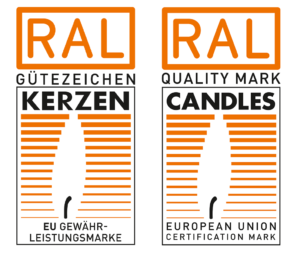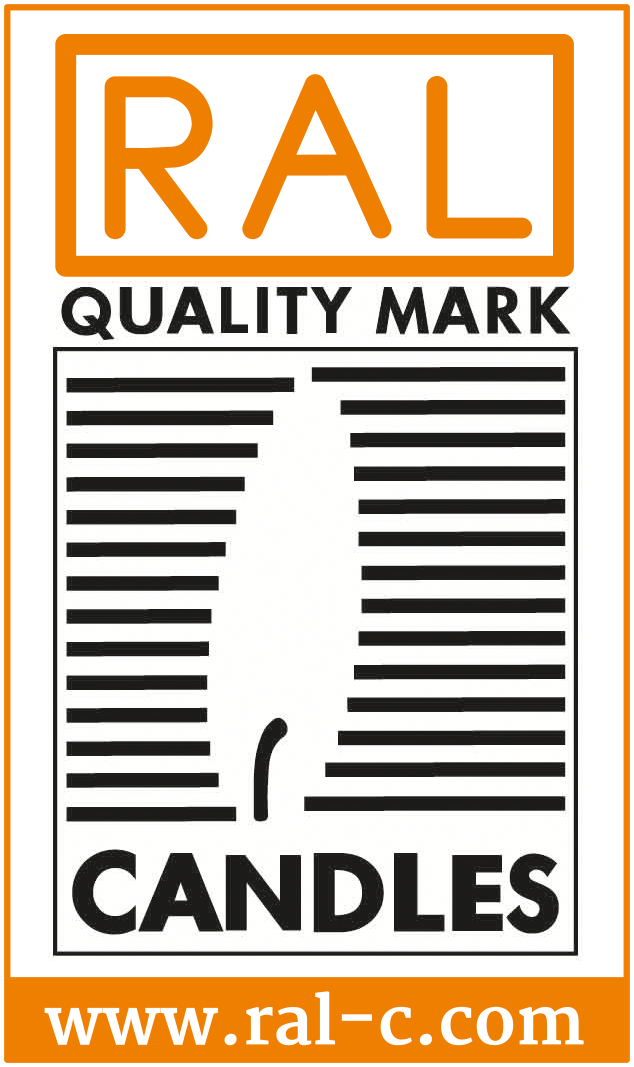How are candles made?
When making candles, there are three primary methods by which the wick and fuel (wax) are fashioned into the desired shape.
Pressing method
In the pressing method, loose paraffin powder is compressed under high pressure using either a stamping press or extrusion press (extruder). With the extrusion press, an endless column is produced, which is then mechanically cut to the desired candle length. This method is particularly suitable for altar or pillar candles. In the case of coloured candles, the candle is then dipped in coloured liquid wax (see coloured candles). The stamping press allows large quantities to be produced quickly, especially of tealights and pillar candles.
Drawing method
In the drawing method, several hundred meters of wick between two rotation drums are repeatedly drawn through a hot wax bath. A layer of wax is applied to the wick each time it passes through the bath. The candle grows to the desired diameter, like the growth rings of a tree. Once the required diameter has been achieved, the column is sent to the cutting machine where it is cut to the specified candle length. The top and bottom of the candle are then fashioned into the desired shape. This manufacturing process is mainly used for simple household candles.
Casting method
In the casting method, liquid wax is poured into moulds in which a wick has already been fixed. The casting method is particularly popular as it allows very different types and mixtures of wax to be processed without difficulty. It is also suitable for unusually shaped candles, such as star and figure candles, as well as for solid-colour candles made entirely of coloured wax.
Once the candle has been pressed, drawn or cast, it can be “jazzed up” in a variety of ways. Motifs or carvings give the candle a distinctive look. A colour coating lends the candle a dazzling shine. Clear or coloured varnishes give it a sophisticated, brilliant shine. Fragrances added to the wax (see scented candles) give off a sublime aroma when the candle is lit.
What does a candle consist of?
For a high-quality candle, you need a good fuel and the right wick. Traditional fuels include paraffin, stearin and beeswax. Hydrogenated oils of animal or plant origin, e.g. palm wax, are also used today. The materials used are ultimately determined by their availability, price and processability in the various methods used in the production of candles. The purity of the raw materials used is key in this regard.
What makes up a candle?
Pigment colours or fat-soluble dyes are used to colour candles. A distinction is made between coloured and dipped candles.
Fuel
Paraffin
Paraffin is mainly produced from fossil fuel oil. Due to its chemical and physical properties, paraffin is suitable for all candle manufacturing methods. Highly purified paraffins have a very good burning quality.
Stearin
Stearin is a solid, crystalline mixture of various fatty acids produced from animal or vegetable fats and oils. Stearin candles are especially drip-resistant as the pool of wax that forms around the burning wick remains quite dry. Furthermore, stearin is harder than most other types of wax. However, this also makes stearin candles more susceptible to breakage. Pure stearin candles can only be produced using the casting method.
Beeswax
Beeswax is a metabolite of the honeybee. The wax is released from the abdomen of the worker bees and used for building the honeycomb. The colour and pleasant smell of the beeswax result from its contact with honey and pollen over time. This raw material is a natural product that is thus subject to limited availability. Due to their consistency, beeswax candles require stronger wicks than normal candles.
Palm wax
Palm wax is the name for a series of different waxy products, which are mostly produced from the fruits of the oil palm. Candles made from this natural raw material need stronger wicks than those made from beeswax due to their higher consistency.
The wick
Optimal burning behaviour depends on the right wick. Wicks are mainly made of cotton and are braided on specially developed machines. Both the cotton yarn and the braided wick are first cleaned and then chemically prepared. Preparation prevents, among other things, an afterglow of the wick once the candle has been extinguished.
The purpose of the wick is to transport the liquid fuel to the wick tip where it burns in the flame. Important: The wick must be adapted to the particular type of candle, the raw material used, the shape and dimensions of the candle, as well as the candle manufacturing process (in terms of absorbency, yarn type/strength, braiding technique and chemical preparation).






